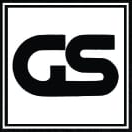o you have excess inventory gathering rust in your scaffold yard? Then, you could be missing out on an easy way to maximize your utilization and cash flow.
The scaffolding rental market is projected to grow at 5.32% from 2018-2022 (source). Renting out scaffolding and equipment can help you expand your business and diversify your revenue stream.
While it is a highly lucrative business, many scaffolding vendors struggle to attain the levels of success they desire.
Without the right inventory management systems in place, managing all of the moving parts involved can become a nightmare.
In this blog post, you will learn more about the secrets to maximizing ROI with scaffolding re-rentals.
What Are the Challenges for Scaffolding Rental Business Owners?
First and foremost, a lack of inventory management is the biggest obstacle to running a rental business. Without the right forecasting, management, and invoicing systems in place, you could find yourself exposed to any number of risks, as described below.
Inventory Control
Most scaffolding firms still rely on spreadsheets and paper-based shipping documents for asset management and rental inventory tracking. These approaches are error-prone and full of costly inefficiencies.
Shipping documents are often duplicated or triplicated to track scaffolding rentals from the yard to job site, and back. But they aren’t always properly checked and signed.
In some cases, the shipping list gets lost, making it difficult to keep track of rental equipment coming in and out of the yard. When the shipment arrives, it is not counted correctly due to the lack of verification against shipment. This makes it difficult to capture over-shipments or missing components as they travel back and forth between yard and job site.
Another common problem is the lack of a formal count sheet or inspection procedure for rental inventory, thus limiting your visibility into stock levels. While some generic software can handle trackable items with serialized numbers, bulk assets don’t get accounted for over time. Without regular inventory counts, businesses can lose a fortune due to lost or stolen inventory.
Unfortunately, this is the reality for many scaffolding businesses.
Billing and Invoicing
Inaccurate order tracking also causes all kinds of headaches to the folks in accounting. They rely on physical count of the stock to identify discrepancies between inventory records and the actual stock in hand.
Missing or damaged components that fell off your radar end up not being billed at all. Mistakes in invoicing could cost your company hundreds of thousands each month. And this is where the nightmare begins. You can’t charge customers for repair or replacement costs if these problems get discovered too late. At the same time, a drop in inventory due to equipment failure could lead to unplanned downtime, affecting your rental activities.
Yes. Running a successful rental business isn’t easy.
Don’t pour your money down the drain with inefficient paper- or spreadsheet-based systems or manual inventory records.
We built Quantify to help you automate your rental management, so you can focus on closing deals and improving inventory turnover.
How to Maximize Revenue with Scaffolding Rentals
Beyond inventory management capabilities that you can find in generic software, Quantify takes into consideration every detail that goes into running a profitable scaffolding business.
Maintaining scaffolding utilization rate
Specialized software like Quantify allows you to manage cross-hire in line with your stock record. This way, you can collect data for inventory utilization forecasts.
Generic accounting software only reveals utilization trends over time, meaning you’re not able to use it to determine your actual capacity to handle an upcoming job. Quantify solves this problem with instant inventory utilization reports, enabling you to monitor your utilization rate in real time.
For instance, if you are already utilizing 90% of your current inventory, you may not have enough equipment to serve the next customer coming through the door. Or, if your utilization rate is below 70%, you may be leaving money on the table with too much equipment in the yard.
Ideally, you should aim for a 75% to 80% utilization rate for your equipment fleet to ensure a healthy inventory for immediate demand, and consistent revenue stream.




